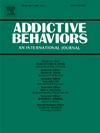非烟草电子烟调味剂对电子烟吸收、减少吸烟和戒烟的影响:一项全国性临床试验的二次分析。
IF 3.7
2区 医学
Q1 PSYCHOLOGY, CLINICAL
引用次数: 0
摘要
电子烟调味剂对成年吸烟者吸电子烟和转向电子烟的影响对美国的电子烟监管至关重要。本二次分析的目的是在美国一项大型全国电子烟供应试验中评估电子烟调味剂选择对电子烟吸收和吸烟变化的影响。方法:向吸烟的成年人免费提供为期四周的电子烟,并提供最少的使用说明(N = 427)。参与者从五种口味中选择:烟草、薄荷、蓝/黑莓(一种口味)、苹果瓜或冰水果。参与者可以为两种为期两周的电子烟选择两种口味。结果:接受电子烟的参与者52%为女性,32%为非白人,基线时平均每天吸烟14.8(7.2)支。只有5% (n = 22)的参与者选择只接受烟草香料。与只接受烟草口味的参与者相比,接受任何其他口味组合的参与者在产品提供结束时(74%对55%)有更大的电子烟吸收率,在产品提供结束时(34%对14%)和最后6个月的随访中(29%对5%)更有可能减少至少50%的吸烟量。在产品提供结束时(11%对5%)和最后6个月随访时(14%对5%)更有可能戒烟。结论:结果表明,非烟草电子烟香料可能比烟草香料更具吸引力,并能更好地促进电子烟的吸收和减少吸烟。在大规模随机试验中,参与者被分配到烟草或非烟草口味是至关重要的。本文章由计算机程序翻译,如有差异,请以英文原文为准。
The impact of non-tobacco e-cigarette flavoring on e-cigarette uptake, cigarette smoking reduction, and cessation: A secondary analysis of a nationwide clinical trial
Introduction
The impact of e-cigarette flavoring on e-cigarette uptake and switching to e-cigarettes among adults who smoke is critical to e-cigarette regulation in the United Sates. The purpose of this secondary analysis was to assess the impact of e-cigarette flavoring choice on e-cigarette uptake and changes in cigarette smoking in a large nationwide trial of e-cigarette provision in the United States.
Methods
A free four-week supply of e-cigarettes was provided with minimal instructions to use to adults who smoke (N = 427). Participants selected from five flavor options: tobacco, menthol, blue/blackberry (one flavor), apple melon, or iced fruit. Participants could choose up to two flavors for each of two, two-week provisions of e-cigarettes.
Results
Participants who received an e-cigarette were 52 % female, 32 % non-white, and smoked an average (SD) of 14.8 (7.2) cigarettes per day at baseline. Only 5 % (n = 22) of participants chose to exclusively receive tobacco flavor. Compared to participants who exclusively received the tobacco flavor, participants who received any other flavor combination had greater e-cigarette uptake at the end of product provision (74 % vs. 55 %), were more likely to reduce cigarette smoking by at least 50 % at the end of product provision (34 % vs. 14 %) and at the final 6-month follow up (29 % vs. 5 %), and numerically, but not statistically, more likely to be abstinent from cigarettes at the end of product provision (11 % vs. 5 %) and the final 6-month follow-up (14 % vs. 5 %).
Conclusions
Results suggest that non-tobacco e-cigarette flavors may be more appealing than tobacco flavors, and better promote uptake of e-cigarettes and cigarette smoking reduction. Large-scale randomized trials in which participants are assigned to either tobacco or non-tobacco flavors are critical.
求助全文
通过发布文献求助,成功后即可免费获取论文全文。
去求助
来源期刊

Addictive behaviors
医学-药物滥用
CiteScore
8.40
自引率
4.50%
发文量
283
审稿时长
46 days
期刊介绍:
Addictive Behaviors is an international peer-reviewed journal publishing high quality human research on addictive behaviors and disorders since 1975. The journal accepts submissions of full-length papers and short communications on substance-related addictions such as the abuse of alcohol, drugs and nicotine, and behavioral addictions involving gambling and technology. We primarily publish behavioral and psychosocial research but our articles span the fields of psychology, sociology, psychiatry, epidemiology, social policy, medicine, pharmacology and neuroscience. While theoretical orientations are diverse, the emphasis of the journal is primarily empirical. That is, sound experimental design combined with valid, reliable assessment and evaluation procedures are a requisite for acceptance. However, innovative and empirically oriented case studies that might encourage new lines of inquiry are accepted as well. Studies that clearly contribute to current knowledge of etiology, prevention, social policy or treatment are given priority. Scholarly commentaries on topical issues, systematic reviews, and mini reviews are encouraged. We especially welcome multimedia papers that incorporate video or audio components to better display methodology or findings.
Studies can also be submitted to Addictive Behaviors? companion title, the open access journal Addictive Behaviors Reports, which has a particular interest in ''non-traditional'', innovative and empirically-oriented research such as negative/null data papers, replication studies, case reports on novel treatments, and cross-cultural research.
 求助内容:
求助内容: 应助结果提醒方式:
应助结果提醒方式:


